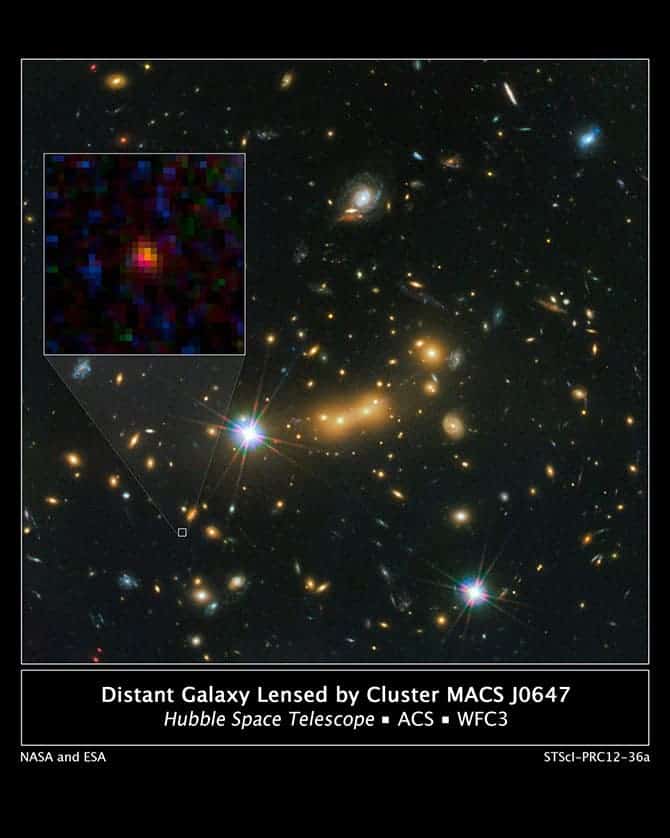
The inset at left shows a close-up of the young dwarf galaxy. This image is a composite taken with Hubble’s WFC 3 and ACS. Credit: NASA, ESA, and M. Postman and D. Coe (STScI) and CLASH Team.
NASA scientists have announced they have discovered the farthest object discovered so far in the Universe, a 13.3 billion old galaxy or a mere 420 million years after the Big Bang.
That’s not to say that its 13.3 billion light years away from Earth, since the Universe has expanded greatly since then and the actual distance might be much greater than this figure. It means that light took 13.3 billion years to reach us.
The galaxy has been dubbed MACS0647-JD and was discovered using a combination of NASA’s Hubble and Spitzer space telescopes, along with gravitational lensing – an interstellar technique that uses distant galaxies to create a zooming effect for the light that passes through them. Without gravitational lensing, this discovery would have been impossible with the current technology employed in telescopes.
“This [magnification galaxy] does what no manmade telescope can do,” Marc Postman, of Baltimore’s Space Telescope Institute, said in a release. “Without the magnification, it would require a Herculean effort to observe this galaxy.”
Essentially, the scientists have looked into the past – 13.3 billion years into the past. What they saw was a galaxy that was only a tiny fraction of the Milky Way. More exactly, it’s been estimated as being only 600 light years wide. For compassion, the Large Magellanic Cloud, a dwarf galaxy companion to the Milky Way, is 14,000 light-years wide. Our Milky Way is 150,000 light-years across.
Since then it has most likely grown, and even collided already with other galaxies. The previous record holder was a gamma ray burst just 600 million years after the Big Bang.
“Over the next 13 billion years, it may have dozens, hundreds, or even thousands of merging events with other galaxies and galaxy fragments,” Dan Coe, lead author of the study announcing the discovery, said in a release. “This object may be one of many building blocks of a galaxy.”
source: NASA









